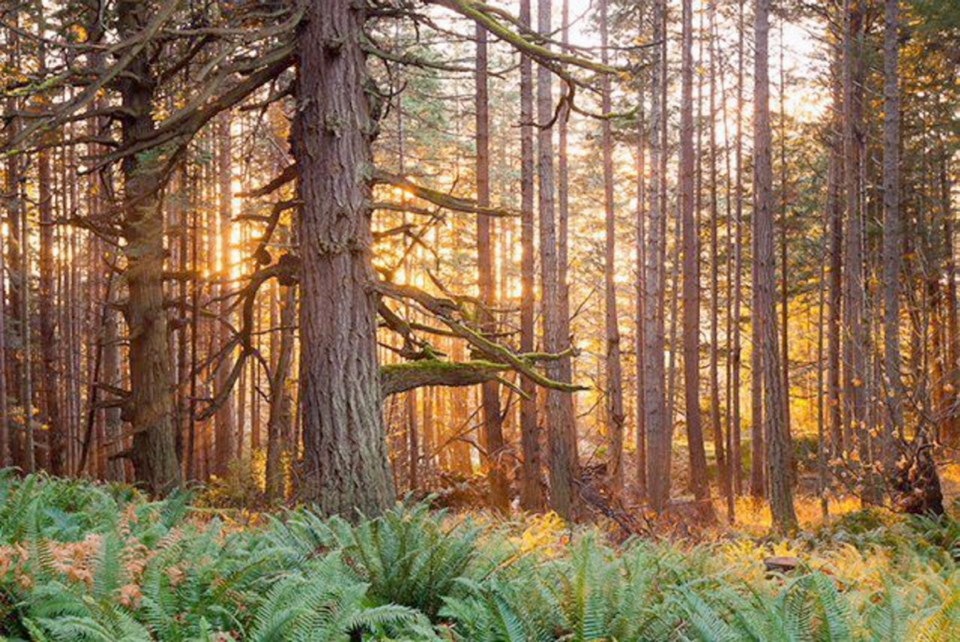This year, a resident of the Olympic Peninsula was sentenced to 30 days in jail for felling and stealing a bigleaf maple on federal land near Olympic National Park.
The theft was one of many tree thefts in Washington state since demand for the shimmering, curly-grain pattern found in some bigleaf maple wood skyrocketed about 15 years ago.
The patterned wood, called ripple or flame maple, is sought by makers of fine furniture and of guitars, mandolins, violins and other wooden musical instruments. The highest-quality wood can sell for as much as $200 for a half-metre-square, 10-centimetre-thick slab.
British Columbia sees its own share of such thefts from parks, Crown lands and private property.
The problem was getting so bad that, in 2007, police started cracking down on mills that accepted and processed curly maple wood. By educating mill owners and managers, the police made it difficult for tree poachers to move and process the wood.
Once cut, the trees must be processed within two days or the wood loses its valuable characteristics.
Despite these efforts, however, in 2012, a B.C. man was fined $500 after being convicted of stealing a 100-year-old maple tree from an Abbotsford forest. In 2011, two other men were fined $5,000 for stealing three bigleaf maple trees from Crown land near Bridal Falls. The RCMP’s Forest Crimes Investigation Unit says about 50 tree thefts are reported each year. Most incidents involve cedar and maple trees in the Lower Mainland.
To help combat the problem across the region, volunteers from the U.S.-based non-profit Adventure Scientists have spent the past few months gathering leaves and wood samples from bigleaf maple trees up and down the coast. The organization will use that information to build a genetic reference library that law enforcement officials in both Canada and the U.S. can use to identify where a particular tree has come from.
Although the group is focusing on bigleaf maple this year, it intends to build similar DNA-reference libraries for all high-value species routinely targeted by poachers.
Other such candidate B.C. species include Interior and Engelmann spruce and Western red cedar — particularly old-growth specimens such as the one that was poached from the Carmanah-Walbran area in 2012 or any number of cedar trees and tree parts that go missing from Saanich’s Mount Douglas Park and John Dean Provincial Park every year.
The project builds on DNA work initiated in Victoria. In the late-1990s, Eleanor White and her colleagues at the Pacific Forestry Centre determined how to extract DNA from needles, inner bark and wood to create a forensic tool to help police and conservation officers catch tree thieves.
They found lots of DNA in tree leaves and wood, and were even able to extract DNA from growth rings in old-growth heartwood laid down 210 to 250 years ago. Being able to do this means we can obtain and match DNA from, for example, cedar shakes, a custom-built chair or the neck of a guitar to the stump of the tree the wood came from.
The technique was used to convict a tree poacher in Indiana in 2004. Scientists from Purdue University used DNA analysis to match logs sold to a lumber mill to the stump of a poached black walnut tree about 95 kilometres away.
Adventure Scientists is taking the next step in the tool’s development. By sampling and recording the genetic patterns that distinguish each population of maple, cedar, hemlock, spruce, walnut, teak, rose wood, and so on that exist in the world, they will facilitate and speed the matching of DNA from wood suspected of being stolen to its home country and region and even to its specific tree stump.
Illegal logging costs B.C. between $10 million and $20 million in lost revenue every year.
Under the B.C. Forest Act, anyone found committing an offence can receive a fine of up to $500,000 and face up to two years in jail. Offences under the Forest and Range Practices Act can result in fines up to $1 million and up to three years in jail. However, few penalties that high are imposed.



